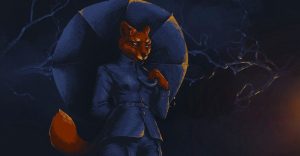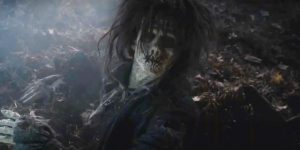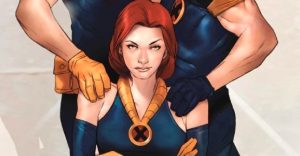D&D Planes You Shouldn’t Stay In For Too Long (& Why)

When characters in the Netflix hit Stranger Things discussed the parallel world of The Upside-Down, they compared it to the Vale of Shadows from their game of Dungeons & Dragons. While the Vale of Shadows fits well within the context of the show, the description of a sinister alternate dimension that is a dark reflection of the world syncs with D&D’s concept of planes of existence. Many of the planes in D&D are just as dangerous and unwelcoming as The Upside-Down, and adventurers should approach these planes with careful preparation, and try not to overstay their welcome.
The planes have long been a part of Dungeons & Dragons, dating back to the early editions of the game depicted on Stranger Things. The primary function of planes in D&D was to account for the homes of supernatural beings like elementals and the gods, as well as for grand adventures where the heroes go on quests into other planes. Epic, high level D&D campaigns might feature journeys to the elemental plane of fire, or to the homes of celestials or fiends. Such journeys are often wondrous and dangerous, mirroring real world legends and folklore, with travels into the spirit world, or a journey to Mount Olympus.
The main world a D&D game takes place in is called is called the Material Plane, a physical world like Earth but with whatever fantasy elements that particular setting contains. The planes that surround these Material Plane worlds are the ones typically discussed in the planar cosmology of Dungeons & Dragons. The Dungeon Master’s Guide provides information on the planes of the current edition of D&D, as well as the rules for adventuring in these realms. Each plane has its own inherent properties that sadistic DMs can use to threaten the party, above and beyond the monsters and hostile entities that dwell there. The exact layout of the planes and their connections with one another varies across editions, and sometimes from setting to setting. These are a few of the most dangerous planes for D&D characters to travel to.
Most Dangerous Echo Plane In D&D: The Shadowfell

The Shadowfell originated in fourth edition D&D, along with the Feywild, as planes that are Echo Planes, mirroring and overlapping the Material Plane. The Shadowfell is one of the most similar planes to Stranger Things’ The Upside-Down in D&D, as a dark simulacrum of the material world, corrupted by death and decay, and populated by dangerous monsters. It is also among the most treacherous and unwelcoming planes to visit.
Though the other Echo Plane, the Feywild, is also dangerous, the Shadowfell is more overtly hostile. D&D places The Shadowfell as the homeland of The Raven Queen, and the Dark Powers that created the Domains Of Dread, such as the Ravenloft setting, each imprisoning a Darklord as well as the innocents who populate their domain. The Dungeon Master’s Guide describes Shadowfell inhabitants including shadow dragons, the undead, and monsters who thrive in darkness.
Beyond the other dangers inherent to The Shadowfell, beings who are not native to the plane need to make saving throws to avoid Shadowfell Despair. Failures could result in Apathy, Dread, or Madness, which provide disadvantage on a variety of checks and saving throws. Gaining Dread or Madness makes a character less likely to resist further Shadowfell Despair, and the effects of Apathy including disadvantage on Death Saving Throws. The combined effects of Shadowfell Despair, and the threats of the monsters that populate the plane, make The Shadowfell one of the most dangerous planes in D&D.
Most Dangerous Inner Plane In D&D: The Elemental Chaos

The Inner Planes of D&D are the Elemental Planes, where the building blocks of creation originate. The Planes of Air, Earth, Fire, and Water are all Inner Planes, and the source of Elementals summoned by Druids and other spellcasters. The areas of the Inner Planes nearer to the Material Plane have more in common with the physical world, and can be the destinations for D&D adventures. The further away from the Material Plane one travels, the more abstract and insurmountable they become.
Close to the Material Plane, the elemental planes hold dangers, but still resemble the material world, with cities and gateways connecting to other elemental planes. Further away from the Material Plane, each Elemental Plane becomes increasingly difficult to traverse, as it loses any shared elements with other planes. The Dungeon Master’s Guide describes the outer reaches of the Elemental Planes as “great expanses of solid earth, blazing fire, crystal-clear water, and unsullied air.”
Any of D&D’s Inner Planes could be the most dangerous, therefore, if the group travels far enough into them. The extremities of the Inner Planes house the Elemental Princes of Evil, and at the furthest ends the elements “dissolve and bleed together into an unending tumult of clashing energies and colliding substance called the Elemental Chaos.” The Forgotten Realms D&D setting, and others, places the Elemental Chaos as home to the Titans who once challenged the gods. The Elemental Chaos is beyond dangerous, as extraordinarily little can survive there, and nothing that lives in the realm remains unchanged.
Most Dangerous Outer Planes In D&D: Planes Of Evil

The Outer Planes are the planes that correspond to D&D’s alignment system, a spectrum combining where a character lies between Good and Evil, and Law and Chaos, with Neutral options in between for each. These Outer Planes are the D&D equivalents of heaven and hell, the origin points of celestials and fiends, D&D’s versions of angels and devils. The outer planes pull from a variety of real-world mythologies, such as Ysgard’s roots in Norse myths and The River Styx of Greek myths.
Any of the Outer Planes could be potentially threatening to a character of opposing alignment, as the denizens of the plane might see them as an enemy, but the planes themselves can also influence characters. Spending extended time in an Outer Plane might cause a Player Character’s alignment to change, becoming closer to the plane they are residing in. This is especially troubling in the plane of Chaotic Evil, The Abyss, where Abyssal Corruption could lead a character to Treachery, Bloodlust, Mad Ambition, or Demonic Possession, possibly causing them to turn on their own party.
As one would expect, the other Outer Planes of Evil also hold great dangers for adventurers. The entire plane of Carceri is a massive, miserable prison. Extended time in Hades could transform a character into a Larva, an extremely weak fiend that the native creatures of Hades use for rituals, or for food. The effects of the Plane of Gehenna cause any spell that would benefit an ally to potentially fail. The Nine Hells, a layered plane controlled by Archdevils loyal to Asmodeus, is perilous for obvious reasons.
Most Dangerous Setting-Specific D&D Plane: Xoriat

While the Echo Planes, Inner Planes, and Other Planes are broad-stroke D&D concepts discussed in the Dungeon Master’s Guide that could work for any D&D setting, a few settings have their own unique planes. The Eberron setting features a unique planar cosmology, where rather than having static locations, the planes orbit like planets around the Material Plane. When planes rotate closer to the Material Plane of Eberron, their effects are felt more strongly in the material world, and travel to that plane becomes easier.
Most of the planes of Eberron resemble the traditional planes of D&D, with elemental planes like Fernia, the Sea of Fire, and Risia, the Plain of Ice, equating to the Inner Planes of Elements, and alignment-oriented planes like Daanvi the Perfect Order and Kythri the Churning Chaos equating to the Outer Planes. A unique plane to Eberron’s cosmology is Xoriat, the Realm of Madness. Xoriat is described as being closer to the works of H.P. Lovecraft than any analogue to traditional mythology, as a place of infinite planes stacked on top of one another, where linear time has no meaning, and hidden truths drive outsiders mad.
Rather than a simple home for Dungeons & Dragons’ demons, Xoriat’s native race is the nightmarish Daelkyr, beings who warp flesh and reality, and who are responsible for the creation of the majority of the Eberron setting’s Aberration-type monsters. Most descriptions of Xoriat, and its influence on the material world, read like David Cronenberg body horror concepts, with “seas of protoplasm” and “cities crafted from gargantuan, fleshy tumors.” Eberron’s Xoriat is a uniquely horrifying and dangerous plane, even alongside the more traditional terrors of D&D’s Hells, Abyss, and Elemental Chaos.
Most Dangerous Material Plane: A DM’s Homebrew World

Dungeons & Dragons uses the planes not just as sources of mythic elements within a particular setting, such as deific and elemental forces, but also for travel between different campaign settings, forming a “D&D Multiverse.” The worlds of Greyhawk, Eberron, and Toril (the planet of the Forgotten Realms setting) are all examples of Material Planes.
Second edition would introduce the notion of travel between D&D settings, with various modes of traversing the different Material Plane worlds, like Sigil, the City of Doors that connects the worlds of the D&D multiverse in the game Planescape, or the magic-powered starships that allow for travel between the Material Plane worlds in Spelljammer.
Given this, beyond the various mythical Echo Planes, Inner Planes embodying elements, and Outer Planes exemplifying concepts of ethical and philosophical struggle, the planes also provide a way to travel to different campaign settings. While they might not be as overtly dangerous, some of the Material Planes include harsh settings like Dark Sun, an arid desert where the gods have departed the world. It is possible the harshest and most unforgiving plane could be a Dungeon Master’s own homebrewed Dungeons & Dragons world, a Material Plane the players have no way to prepare for.
About The Author

















